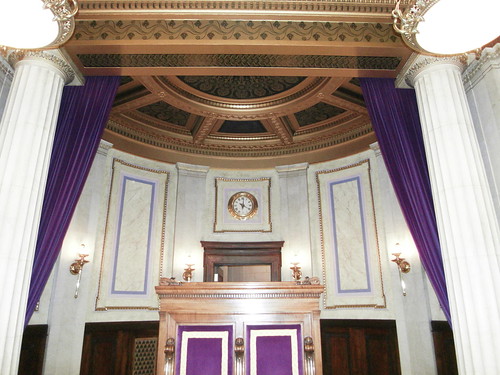
Image : http://www.flickr.com
Neoclassical and Greek Revival architecture are two of America's most recognized building forms. Though not in wide use today, these styles, characterized by columns, tall facades, and simple white exteriors, can be easily found on many of the nation's historic landmarks and government buildings, including The White House. Students of architecture can expect these forms to endure for centuries longer, thanks to their integral role in the American social fabric.
While essentially a school of its own, Greek Revival is style within the Neoclassical tradition, which began in the mid-18th century. Neoclassicism originated in Europe as a reaction against naturalistic Rococo architecture, and as a progression beyond Late-Baroque building styles. In its purest form, the movement was one that simply revisited and paid tribute to the forms of Classical Greece, while applying itself to modern architecture. This widespread interest in Greece coincided with a wave of archeology in the Mediterranean region, which produced many stunning examples of Greek art and engineering. The finds were so numerous and consistently amazing that they shifted the way historians interpreted Greek and Roman civilization - many now saw Greece as the defining influence of western culture, instead of Rome, as was previously thought. The result was a re-energized interest in Greek art and architecture, fueled in part by the many new building and design examples unearthed at the time in Greece. The Greek Revival is often seen as the last phase of the Neoclassical movement.
Besides its unique political and cultural heritage, Greek Revival architecture is also distinct for its use of front gables, and occasionally employing hipped roofs.
Greek Revival architecture quickly became popular in America, and by the early 19th century was being applied to many public institutions across the nation. The interest was largely a result of America's fledgling national identity as a world-power democracy in the tradition of Greece. This image of America was promoted heavily by wealthy home builders and political leaders alike, particularly following the war of 1812, which cast America's previous mentor nation, England, in an unfavorable light. Along the Eastern Seaboard and throughout the South, Greek Revival architecture became synonymous with high-end estates and plantations. High-profile examples of Greek Revival architecture from this period include Philadelphia's Second Bank of the United States, and the Jefferson Memorial and United States Capitol in Washington, DC.
Meanwhile, the Neoclassical movement continued to have a less political influence art and architecture - many American commercial and public buildings from the early 19th century are said to originate in the broader neoclassical tradition, while homes built at this time were commonly attributed to the more focussed Greek Revival school.
Start your home search in the Bethesda MD real estate area at KoitzGroup.com. The website has a free local mls search, extensive information for buyers and sellers, and information on nearby markets like the Northwest Washington DC real estate area.